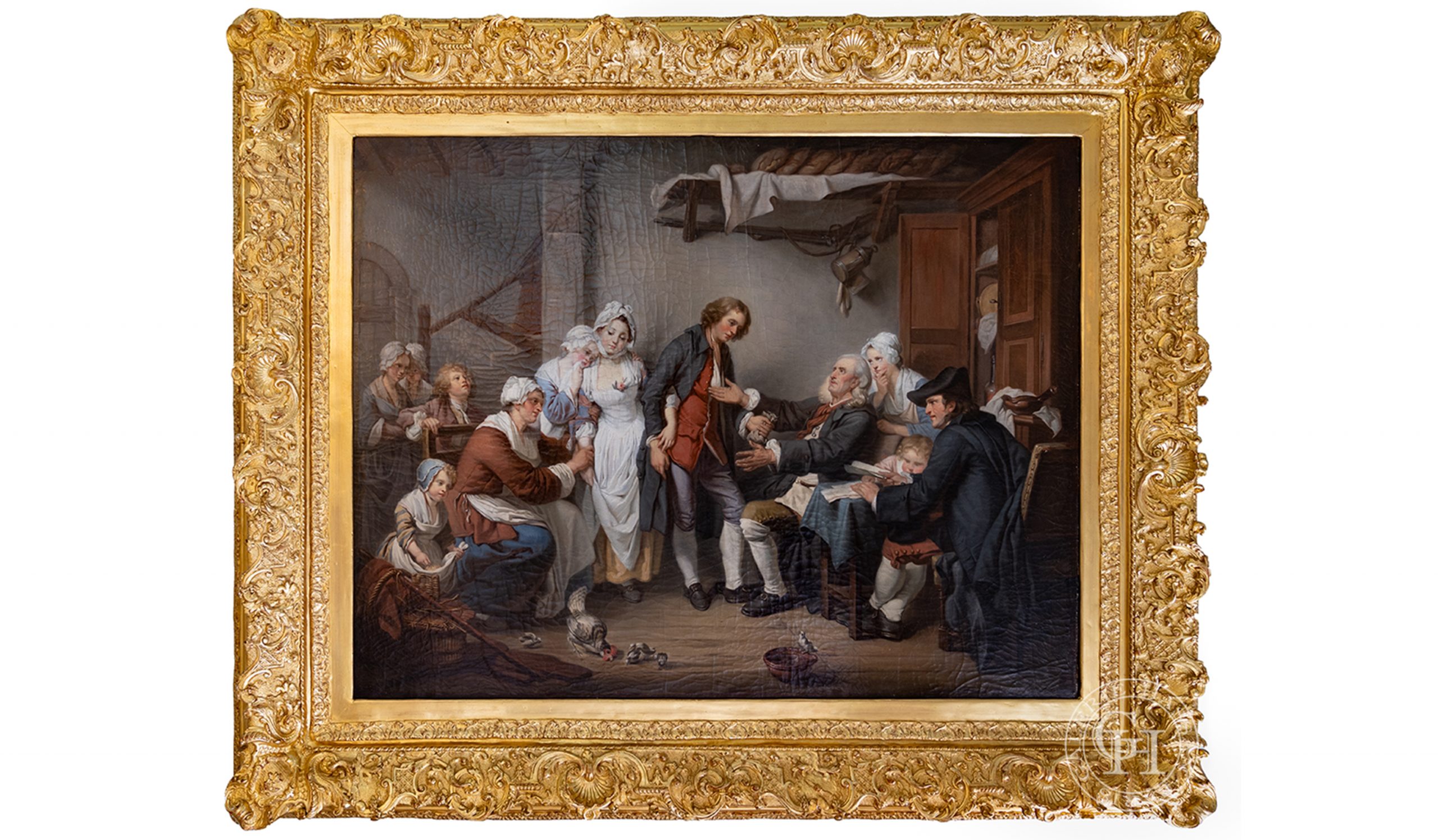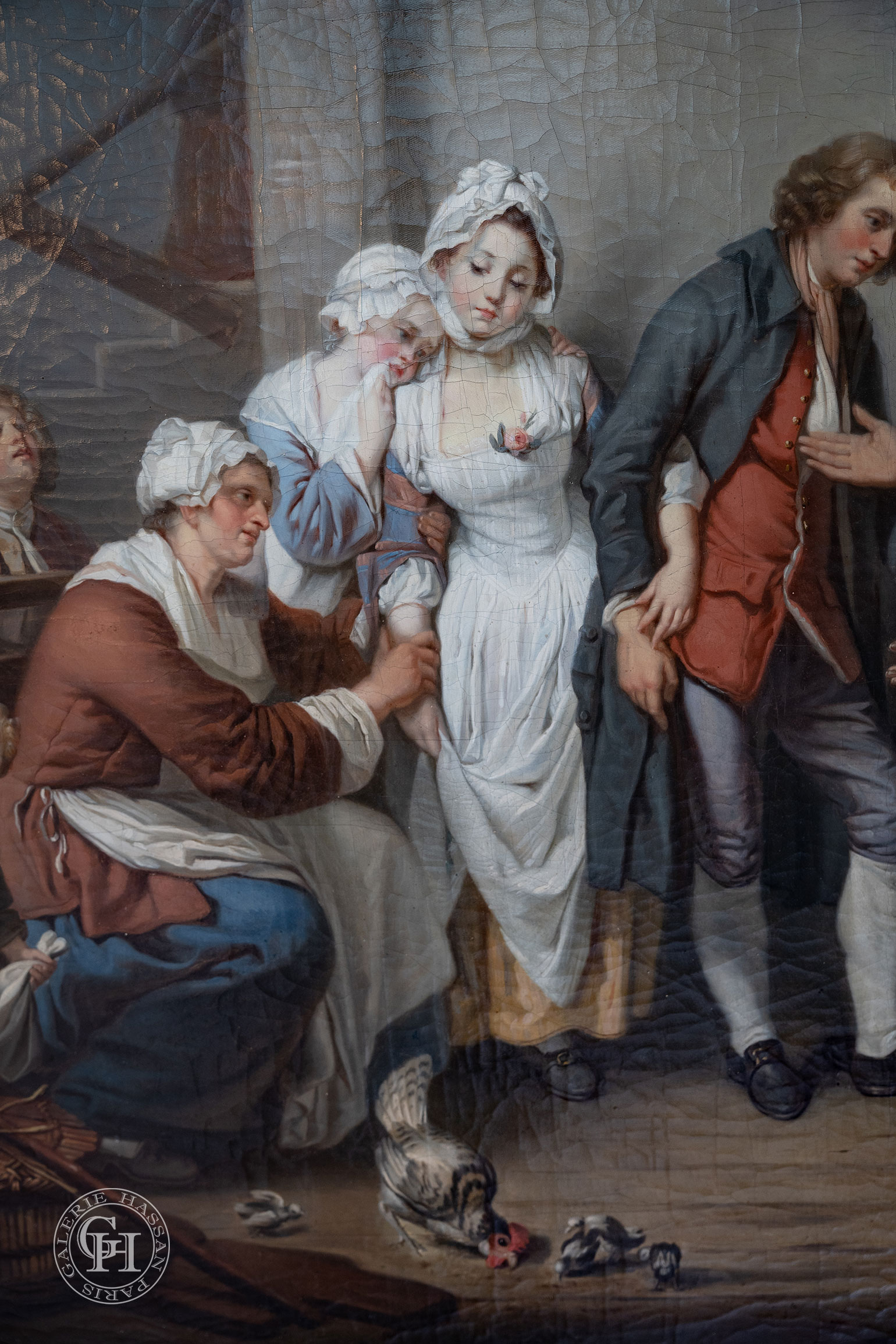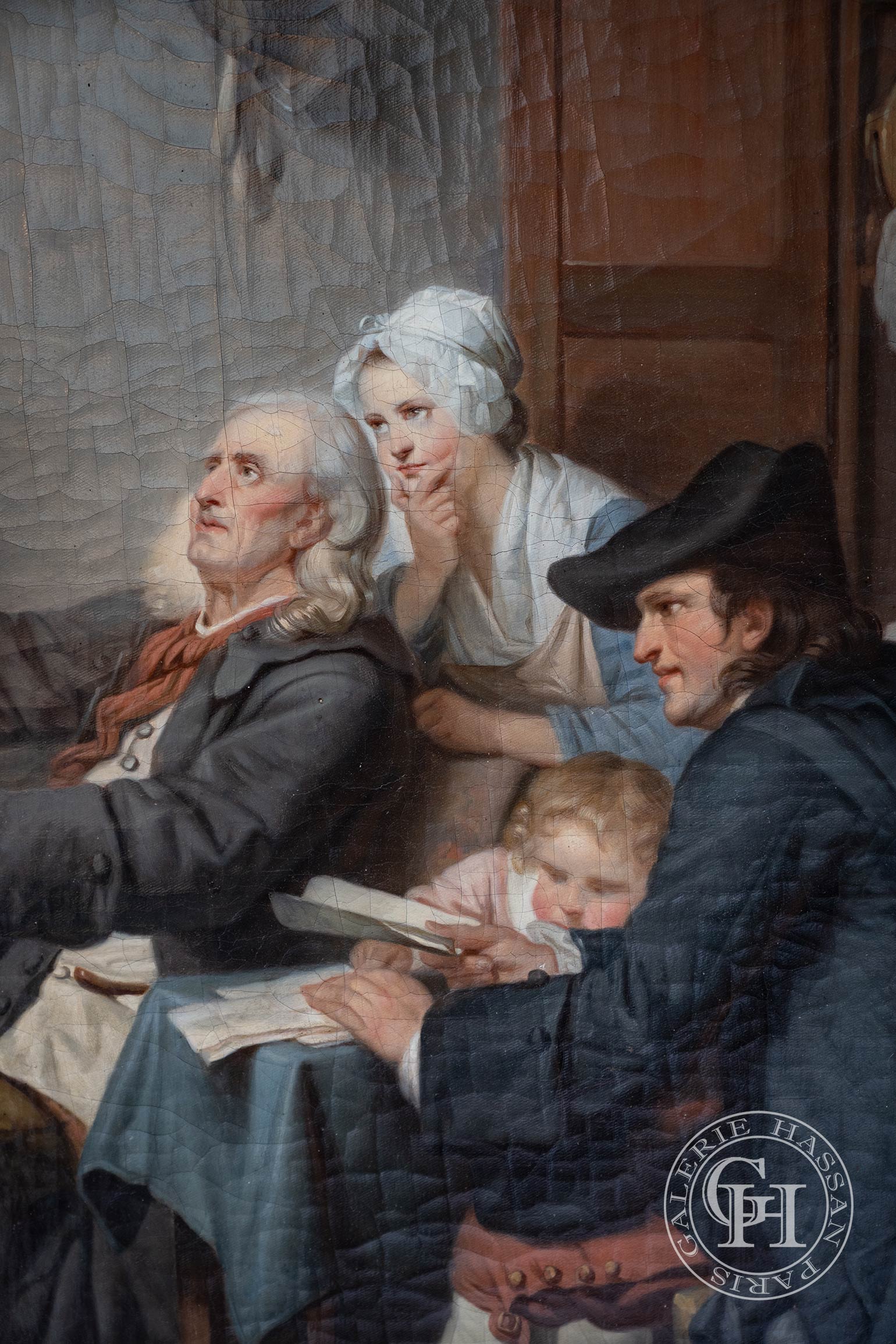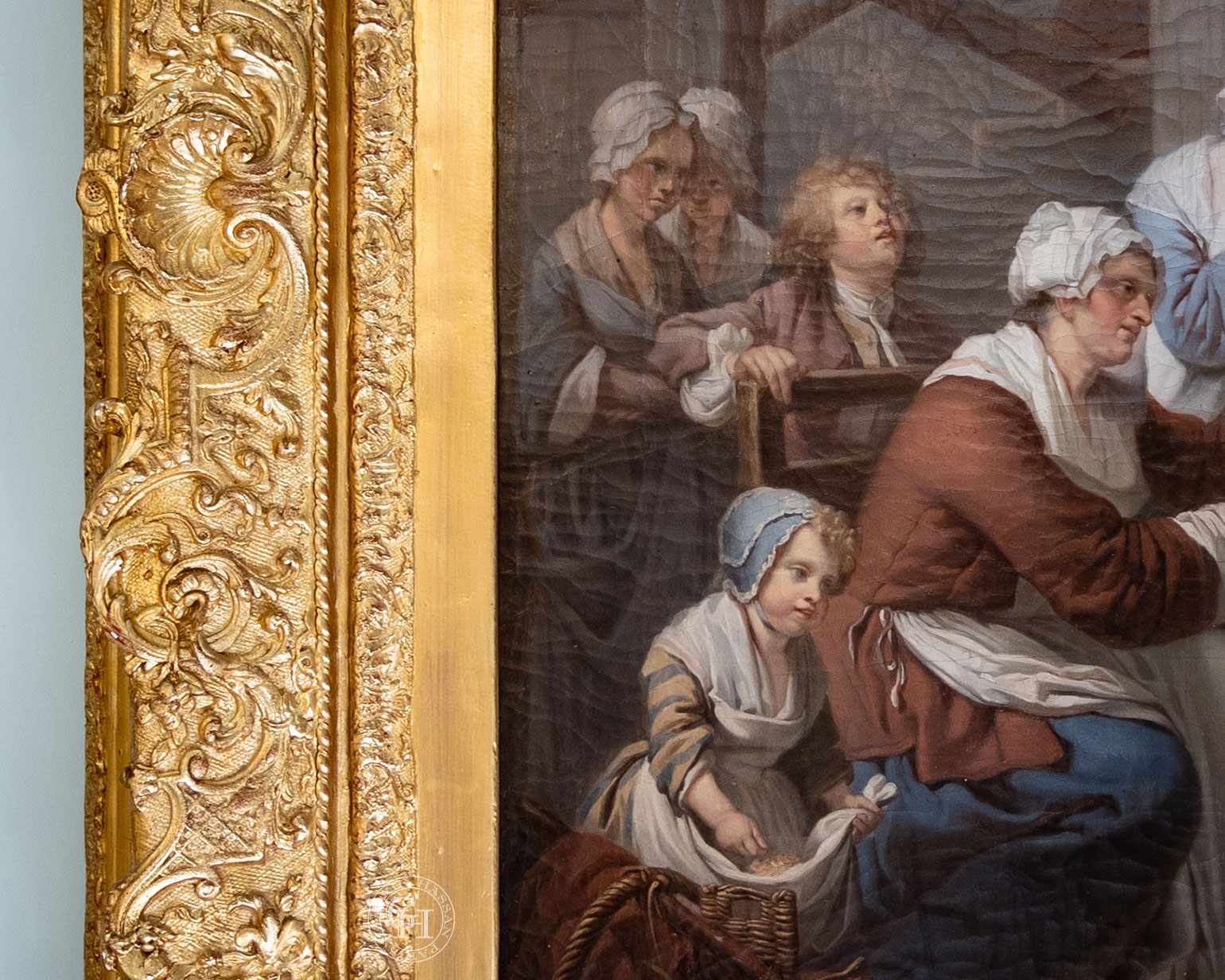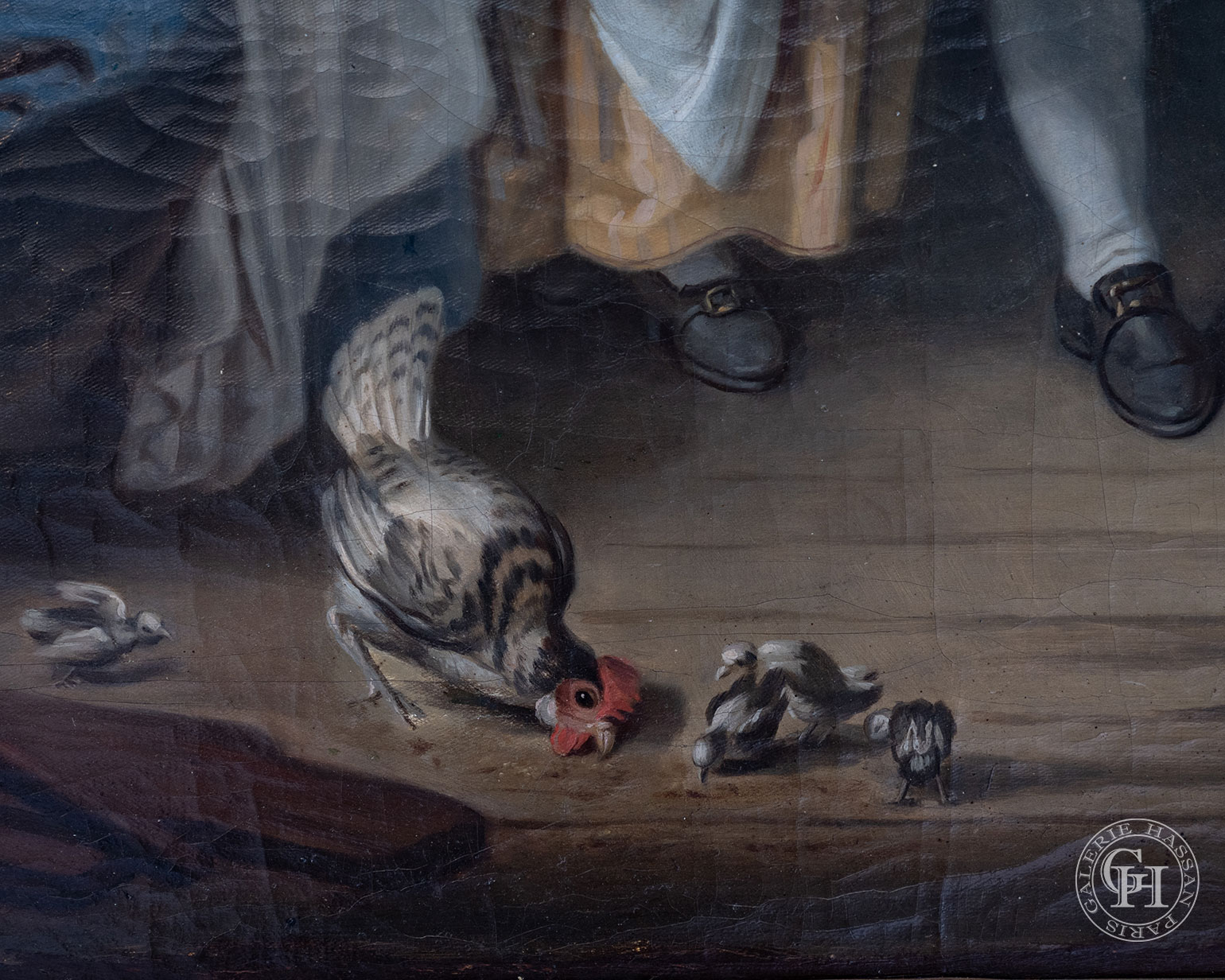The Village Accord or the marriage contract after Jean-Baptiste Greuze
The original painting was exhibited at the Salon of 1761 where it was praised by the critics, in particular by Denis Diderot. The painting was produced for the cabinet of the Marquis de Marigny and was acquired by Louis XVI in 1782 before joining the Louvre collections where it is still kept (INV 5037).
L’Accordée de village features a wealthy peasant family whose members all react, in their own way, to this serious and moving moment: the young woman, in the center, is granted by her father to her future husband and is getting ready to leave the family home with him. The mother comforts her daughter by holding her hand and her sister, saddened by this departure, cries on her shoulder. Another sister, visible behind the father, looks jealously at the couple. The old man, with a gesture full of emphasis, presents the younger one with a purse symbolizing the bride-to-be’s dowry.
L’Accordée du village shows the change in taste that took place during the 1760s when we found a preference for moral subjects and the illustration of a new world: the simplicity and honesty of feelings.
Jean-Baptiste Greuze is one of the most remarkable painters of his time for the true and natural character he gives to his figures and compositions, more touching than those of history painting.
The painter made several preparatory drawings for this work, including an ensemble composition in the Petit Palais in Paris.
French work from the 19th century, circa 1860.
Dimensions
Height: 130 cm – Width: 150 cm
Other suggestions
-
Agate vases
Agate vases3 February 2022








